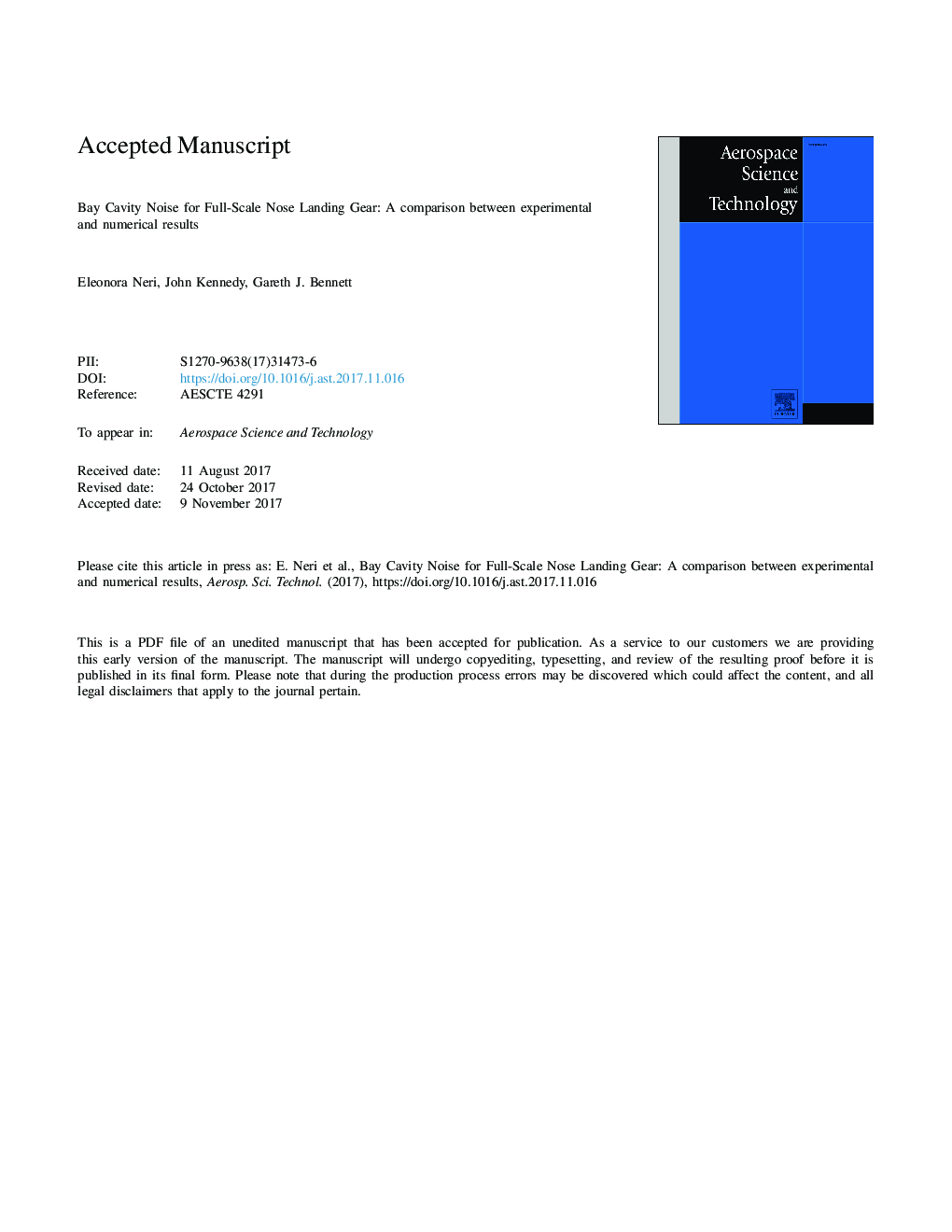| Article ID | Journal | Published Year | Pages | File Type |
|---|---|---|---|---|
| 8058282 | Aerospace Science and Technology | 2018 | 38 Pages |
Abstract
This paper presents results obtained from the wind tunnel testing of a highly detailed full-scale nose landing gear model of a regional aircraft. The full wheel bay, doors and a significant part of the fuselage are included in the model. The emphasis of this paper is on wheel bay cavity noise and its potential contribution to the far field at approach conditions and at M<0.2. A numerical analysis allows the pressure field in the wheel bay to be studied identifying the frequencies at which the Helmholtz resonance and the 3-D standing wave duct modes are excited by instabilities in the bay opening shear layer. Experimental results agree with those predicted, with the empty wheel bay radiating tones of up to 12 dB at the Helmholtz resonance, at two duct modes as well as at interaction tones between them. The Rossiter equation is successfully used to explain fluid-resonant lock-on between the shear layer instability modes and the excited resonant modes as a function of tunnel velocity. However, when the full landing gear and doors are installed into the empty bay model, these bay tones no longer radiate to the far field. It is concluded that this is due to disruption of the shear layer by this particular nose landing gear configuration whose leg is centrally located and whose drag and side-stays occupy a large area of the wheel bay opening.
Related Topics
Physical Sciences and Engineering
Engineering
Aerospace Engineering
Authors
Eleonora Neri, John Kennedy, Gareth J. Bennett,
